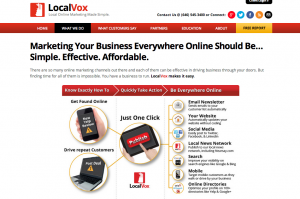 Mobile has completely disrupted not only the way consumers interact with brands but also how brands are reaching and engaging with audiences. For entrepreneurs just launching a business, mobile is one of their top priorities. We asked entrepreneurs how the rise of mobile is changing the way they market their product or service?
Mobile has completely disrupted not only the way consumers interact with brands but also how brands are reaching and engaging with audiences. For entrepreneurs just launching a business, mobile is one of their top priorities. We asked entrepreneurs how the rise of mobile is changing the way they market their product or service?

The following answers are provided by the Young Entrepreneur Council (YEC), an invite-only organization comprised of the world's most promising young entrepreneurs. In partnership with Citi, the YEC recently launched #StartupLab, a free virtual mentorship program that helps millions of entrepreneurs start and grow businesses via live video chats, an expert content library and email lessons.
1. Mobile Is the New Desktop
Mobile is changing the way we market in that we have to make sure that our marketing efforts are easily consumable on both desktops and mobile devices. This applies to more areas than just sites and apps, such as mobile-friendly emails and small things like making sure that the information in your Facebook timeline banner isn't cut off. We must always check and apply any necessary changes.
— Fabian Kaempfer | Chocomize
2. On-the-go Content Is More Relevant
Our current site is optimized for a laptop and desktop experience. Over the past few months, the percentage of customers looking at our product via mobile has surpassed 20 percent of all users. The mobile use case is very different, and we are shifting our approach to focus on simplifying the purchase process and creating fun content that you might want to share with people on the go.
— Aaron Schwartz | Modify Watches
3. Personal Engagement Is Still Necessary
The diffusion of mobile technology should be a green light for every business to try to connect with each individual customer. Blanket marketing works, but it does not compare to one-to-one engagement, which creates lasting relationships.
4. Responsive Designs Are Mandatory
People are going to access our SaaS interface from their cell phones or tablets, and there is nothing we can do about it. It is critical we make our platform responsive so that it scales and is usable on all kinds of different devices. By having this ability, we can tell prospects that no matter where they are, they can quickly and easily communicate with their clients.
— Jared Reitzin | MobileStorm Inc.
5. Keep the Mobile User in Mind
A person on a mobile device is most likely looking for something different than a person on a computer is, and your mobile website should reflect that. Reorganize content, category pages and conversion funnels with a mobile user's intent and needs in mind.
— Andrew Saladino | Just Bath Vanities
6. Mobile Sites Are Better Than Responsive Designs
Users get a far better experience with a mobile site than a responsive site. With responsive designs, you're usually either making your desktop version less than ideal or your mobile version less than ideal. With a mobile site, everyone has content optimized to their device. Avoid the lazy, one-size-fits-all approach of responsive designs, and invest the extra money in a mobile site.
7. Strategies Must Be Adjusted
I think the fast rise of mobile is a huge game-changer in how we think about our marketing efforts through social channels, search engines, etc. Our analytics show us that almost half our traffic is coming through mobile, and we are really changing our strategy in how we optimize for mobile, segment campaigns by device and locations and much more.
— Pablo Palatnik | ShadesDaddy.com
8. Push Marketing Is Outdated
The rise of mobile has given consumers an on-the-go attitude with a demand for access and transparency from companies. We view this positively because it unleashes an opportunity for brands to create relevance for their customers. With technology at our fingertips or in our back pocket, push marketing is long gone and not coming back. Companies must shift their focus towards managing and engaging.
— Lauren Perkins | Perks Consulting
9. Web Marketing Strategies Are Important
We had to rethink our website strategy beyond the PC experience. As more and more customers are searching and researching on their phones or tablets, we needed to provide an equally great experience that was customized to using those devices and a touchscreen interface. We don't want any more mobile plugins and sites that load wrong.








